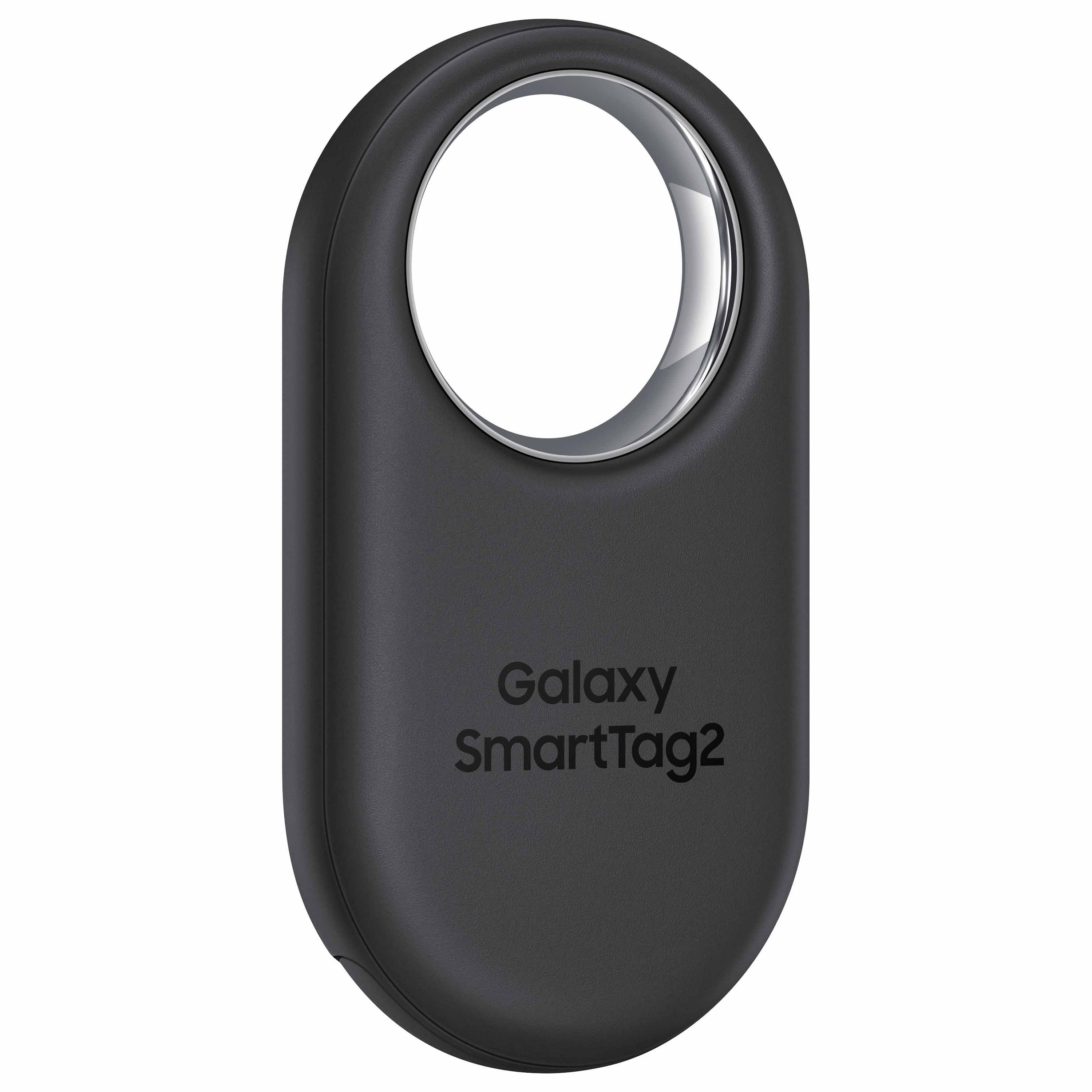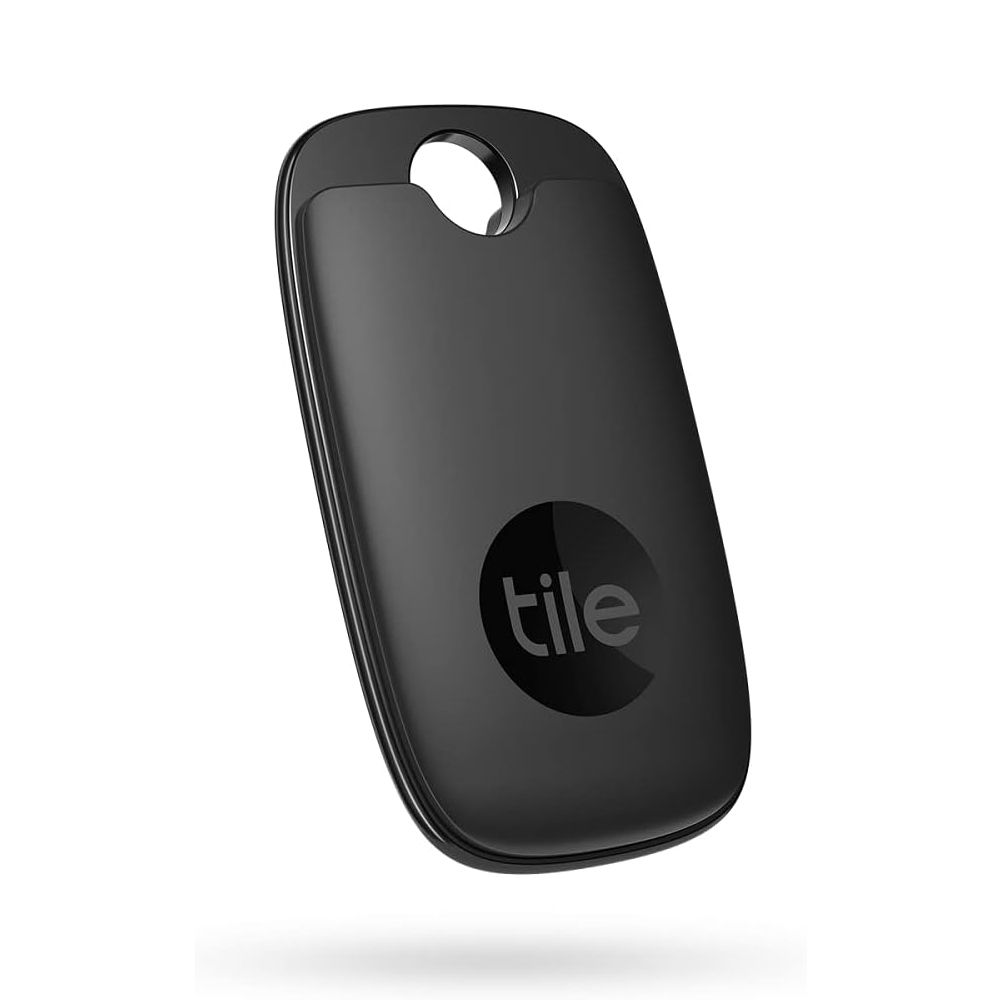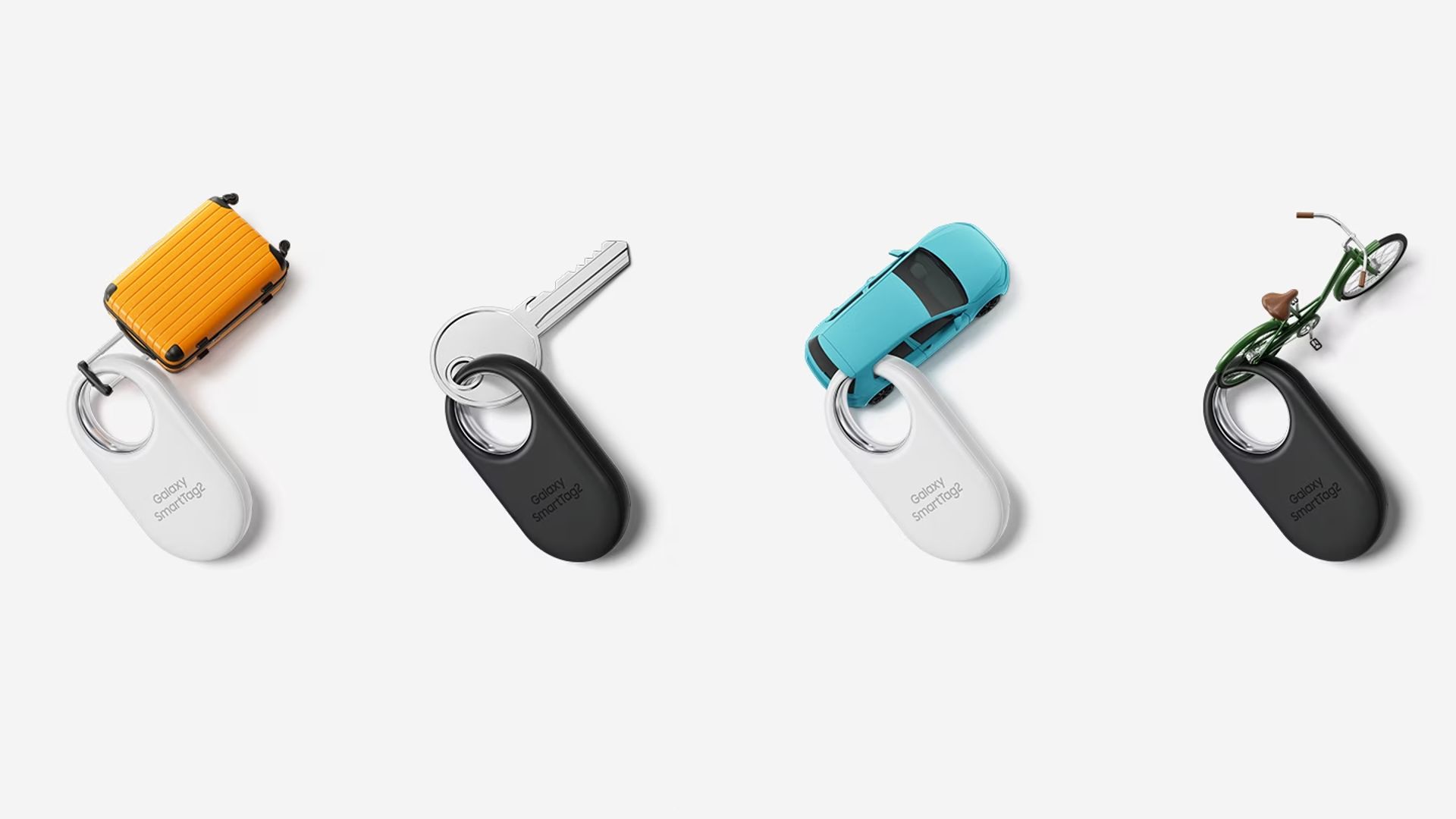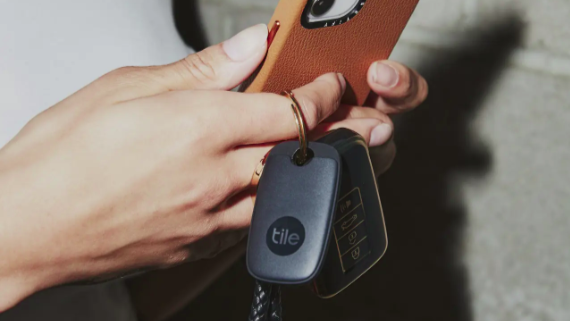-

Samsung Galaxy SmartTag 2
Samsung’s competitor
$22 $30 Save $8
Samsung’s latest Bluetooth tracker aims to compete with the well-established options from Apple and Tile, sporting a rugged construction, long battery life, and effective range. It even adds a handy augmented reality feature to help locate especially hard-to-find objects.
Pros- Durable and waterproof
- Long-lasting, replaceable battery
- Advanced, local AR tracking
Cons- Only works with Samsung phones
- Less robust network due to compatibility
-

Tile Pro (2022)
A longtime winner
The Tile Pro doesn’t have any fancy features, but its straightforward nature and long-running, extensive, worldwide user network make it an extremely effective option – and one that will work with any phone, Android or iOS.
Pros- Plenty of connected phones to keep track of it
- Works with most brands of smartphones (and tablets)
- Easy QR code pairing
Cons- No UWB-based AR tracking
- Network also requires opting in
The Apple AirTag gets a lot of attention, but the first Samsung SmartTag came months before it, and the original Tile years earlier. These immensely handy Bluetooth trackers all do basically the same thing, using a combination of Bluetooth technology to inform you where you misplaced items nearby and a worldwide network of connected users to help you find items that are far away. Samsung’s latest Bluetooth tracker includes some nifty features that some users will love, but the Tile leverages a wider network to appeal to users, despite being slightly less advanced.
Price, availability, and specs
The Tile Pro has been available since June 2022 and is readily available from Tile and third-party retailers for around $30. You can also find the October 2023-released SmartTag 2 from Samsung and various online stores, and it’s usually a few dollars less than the Tile. Regardless, neither is very expensive.
-
Samsung Galaxy SmartTag 2 Tile Pro (2022) Connectivity Bluetooth LE, Ultra Wideband, NFC Bluetooth LE Battery Up to 500 days (normal mode), up to 700 days (power saving mode) Up to 1 year Range Up to 120m Up to 120m Water Resistance IP67 IP67
Design, build, and battery life
Source: Samsung
These devices aren’t just small, they’re also pretty robust. Both feature an IP67 rating, so you won’t have to worry about outdoor use posing any danger. The form factor’s also pretty similar, although the Samsung’s arguably a bit sleeker. These trackers are compact enough for attaching to a key ring or pet collar or stashing in a purse, backpack, or laptop bag without taking up a significant amount of space. You can also purchase them in either black or white.
The trackers take different approaches to charting battery life, with Samsung claiming its new tracker lasts either 500 or 700 hours, depending on whether you select Normal or Power-Saving mode. Tile says its entry will last up to a year with normal use. The dust and water resistance means it’ll take a bit of prodding, but you can replace the battery on both, so don’t worry about your investment becoming obsolete once that time runs out.
Features
Source: Tile
The trackers work the same way, utilizing your phone’s Bluetooth connection and the connection of nearby devices to keep track of faraway belongings (more on that in a bit).
The Samsung goes a couple of steps further, also utilizing the UWB connectivity found in its high-end smartphones for ultra-precise tracking at close range. The SmartTag 2 also sports an NFC chip, which makes it a one-step process to pair with your Galaxy phone.
The downside is that the SmartTag 2 only works if you’re a Samsung phone owner — it requires Samsung’s SmartThings app to be installed on a Samsung device to function. That means if you own any other Android phone (or even an iPhone) you won’t have much of a choice to make between these two.
The SmartTag’s UWB support at least unlocks an interesting feature, whereby a UWB-enabled phone can use augmented reality to help locate nearby items hidden underneath a couch or in a trash can or are otherwise obscured. Just open the app, activate the AR tracking, and use the display to locate the tag’s exact location. Due to the inherent range of UWB, this feature only works at distances up to about 10 meters, with any objects in the way reducing that figure.
The Tile Pro is considerably simpler. It uses Bluetooth LE, and that’s it, although a QR code on the back does make the pairing process pretty quick. There’s no NFC and no UWB. So, there’s no fancy short-range AR tracking, but at least the tracker works with just about any smartphone or tablet.
Networks: the big difference
AirTags get so much press in part because of their popularity and the popularity of the iPhone. Any iPhone within range of an Apple AirTag adds to the device’s range. The Samsung and Tile work similarly, but where Apple’s network is enabled by default, both Samsung and Tile’s are opt-in. Galaxy SmartTags only connect with Galaxy smartphones when the user enables the feature. Tile trackers require users to download and sign onto the Tile app to expand the network.
But here’s the crux of the issue: only relatively recent Galaxy devices are even capable of adding to that network. Sure, Samsung devices are extremely popular, but the relatively restricted compatibility and opt-in nature mean the network isn’t nearly as robust as its competitors.
Tile, by comparison, sees users worldwide, and even an appreciable number in moderately sized cities in America. It’s a much older, more well-known, and more widespread product, so you have a considerably greater chance of tracking down your Tile-tagged devices.
How do I tell if there’s a Bluetooth tracker near me?
The rise in popularity of Bluetooth trackers isn’t without its own dangers, since they could make it relatively easy for a bad actor to keep tabs on someone without their immediate knowledge. Thankfully, Apple and Google are actively joining forces to develop a standard for detecting unwanted Bluetooth trackers. While that’s still in the works, it should be coming soon. In the meantime, there are ways to check for nearby smart tags separated from their owners.
Which one’s right for you?
As much as Samsung wants to imitate Apple, its opt-in system and relatively restricted compatibility make it less useful. The Tile Pro and its higher popularity make it much more reliable. The only advanced feature that makes the SmartTag 2 worth buying is the local AR tracking, which is neat but also niche. Considering the rest of their functionality is pretty similar, most users should opt for the Tile Pro.

Tile Pro (2022)
Best overall
A vast, worldwide tracking network
The Tile Pro and its durable design, reasonable price, and extensive tracking network make it the best choice for most users, no matter what kind of smartphone you’re using.
The exception is if you have a high-end Galaxy phone and frequently need to visually track items that are lost or buried or are worried about items being obscured once you get near them. For example, if items get hidden under piles of clothes, accidentally tossed in the trash, or lost in the woods on a hike, the SmartTag 2 makes it a breeze to track them down once you know their general location (within about 10 meters) and have UWB connectivity on your phone. That’s certainly neat and useful, but it isn’t the most common use case for a Bluetooth tracker.

Samsung Galaxy SmartTag 2
A premium option
Equipped with novel AR tracking
$22 $30 Save $8
Samsung’s Galaxy SmartTag 2 offers a long battery life and the ability to precisely locate items that you know the general location of but just can’t quite see. The only drawback is that its tracking network isn’t nearly as comprehensive.
Source link




